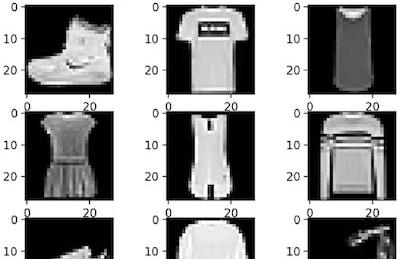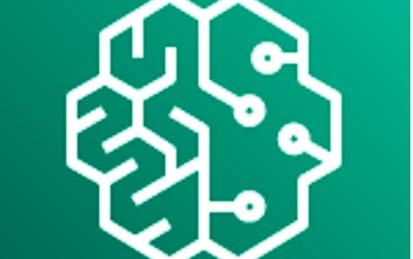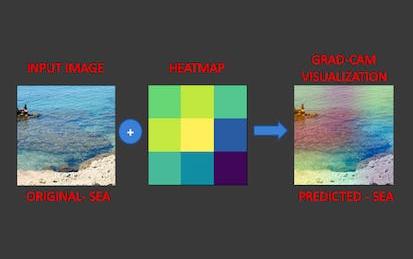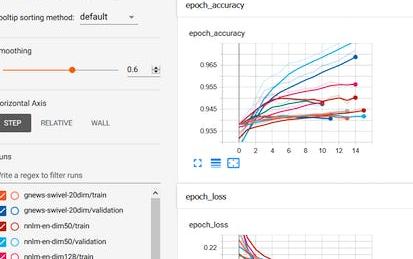

Our Courses

Fashion Image Classification using CNNs in Pytorch
In this 1-hour long project-based course, you will learn how to create Neural Networks in the Deep Learning Framework PyTorch.
-
Course by

-
 Self Paced
Self Paced
-
 2 hours
2 hours
-
 English
English

PyTorch Basics for Machine Learning
This course is the first part in a two part course and will teach you the fundamentals of PyTorch. In this course you will implement classic machine learning algorithms, focusing on how PyTorch creates and optimizes models. You will quickly iterate through different aspects of PyTorch giving you strong foundations and all the prerequisites you need before you build deep learning models.
-
Course by

-
 Self Paced
Self Paced
-
 English
English

PyTorch and Deep Learning for Decision Makers
Learn how PyTorch, a deep learning framework, can be used to automate and optimize processes through the development and deployment of state-of-the-art AI applications. The course will also help you understand the importance of data quality, how to choose the right model, and the challenges in deploying and maintaining both deep learning and machine learning applications.
-
Course by

-
 15
15
-
 English
English

Applied Deep Learning Capstone Project
In this capstone project, you'll use either Keras or PyTorch to develop, train, and test a Deep Learning model. Load and preprocess data for a real problem, build the model and then validate it.
-
Course by

-
 64
64
-
 English
English

Deep Learning with Tensorflow
Much of theworld's data is unstructured. Think images, sound, and textual data. Learn how to apply Deep Learning with TensorFlow to this type of data to solve real-world problems.
-
Course by

-
 English
English

Deep Learning with Python and PyTorch
This course is the second part of a two-part course on how to develop Deep Learning models using Pytorch.
-
Course by

-
 72
72
-
 English
English

Deep Learning Fundamentals with Keras
New to deep learning? Start with this course, that will not only introduce you to the field of deep learning but give you the opportunity to build your first deep learning model using thepopular Keras library.
-
Course by

-
 30
30
-
 English
English

Deep learning in Electronic Health Records - CDSS 2
Overview of the main principles of Deep Learning along with common architectures. Formulate the problem for time-series classification and apply it to vital signals such as ECG. Applying this methods in Electronic Health Records is challenging due to the missing values and the heterogeneity in EHR, which include both continuous, ordinal and categorical variables. Subsequently, explore imputation techniques and different encoding strategies to address these issues. Apply these approaches to formulate clinical prediction benchmarks derived from information available in MIMIC-III database.
-
Course by

-
 Self Paced
Self Paced
-
 32 hours
32 hours
-
 English
English
Explainable deep learning models for healthcare - CDSS 3
This course will introduce the concepts of interpretability and explainability in machine learning applications. The learner will understand the difference between global, local, model-agnostic and model-specific explanations. State-of-the-art explainability methods such as Permutation Feature Importance (PFI), Local Interpretable Model-agnostic Explanations (LIME) and SHapley Additive exPlanation (SHAP) are explained and applied in time-series classification.
-
Course by

-
 Self Paced
Self Paced
-
 30 hours
30 hours
-
 English
English

Deep Learning Applications for Computer Vision
In this course, you’ll be learning about Computer Vision as a field of study and research. First we’ll be exploring several Computer Vision tasks and suggested approaches, from the classic Computer Vision perspective. Then we’ll introduce Deep Learning methods and apply them to some of the same problems. We will analyze the results and discuss advantages and drawbacks of both types of methods. We'll use tutorials to let you explore hands-on some of the modern machine learning tools and software libraries.
-
Course by

-
 Self Paced
Self Paced
-
 23 hours
23 hours
-
 English
English

Fake News Detection with Machine Learning
In this hands-on project, we will train a Bidirectional Neural Network and LSTM based deep learning model to detect fake news from a given news corpus. This project could be practically used by any media company to automatically predict whether the circulating news is fake or not. The process could be done automatically without having humans manually review thousands of news related articles. Note: This course works best for learners who are based in the North America region. We’re currently working on providing the same experience in other regions.
-
Course by

-
 Self Paced
Self Paced
-
 3 hours
3 hours
-
 English
English

Classify Images of Cats and Dogs using Transfer Learning
This is a self-paced lab that takes place in the Google Cloud console. TensorFlow is an end-to-end open source platform for machine learning. It has a comprehensive, flexible ecosystem of tools, libraries and community resources that lets researchers push the state-of-the-art in ML and developers easily build and deploy ML powered applications. This lab uses transfer learning to train your machine. In transfer learning, when you build a new model to classify your original dataset, you reuse the feature extraction part and re-train the classification part with your dataset.
-
Course by

-
 Self Paced
Self Paced
-
 1 hour
1 hour
-
 English
English

Deploying Machine Learning Models in Production
**Starting May 8, enrollment for the Machine Learning Engineering for Production Specialization will be closed. Please enroll in this specialization or to individual courses by then to gain access to this course material.** In the fourth course of Machine Learning Engineering for Production Specialization, you will learn how to deploy ML models and make them available to end-users. You will build scalable and reliable hardware infrastructure to deliver inference requests both in real-time and batch depending on the use case.
-
Course by

-
 Self Paced
Self Paced
-
 33 hours
33 hours
-
 English
English

Intermediate Intel® Distribution of OpenVINO™ toolkit for Deep Learning Applications
This course is designed for application developers who wants to deploy computer vision inference workloads using the Intel® Distribution of OpenVINOTM toolkit. The course looks at computer vision neural network models from a variety of popular machine learning frameworks and covers writing a portable application capable of deploying inference on a range of compute devices.
-
Course by

-
 Self Paced
Self Paced
-
 English
English

Computer Vision with Embedded Machine Learning
Computer vision (CV) is a fascinating field of study that attempts to automate the process of assigning meaning to digital images or videos. In other words, we are helping computers see and understand the world around us!
-
Course by

-
 Self Paced
Self Paced
-
 31 hours
31 hours
-
 English
English

Using SAS Viya REST APIs with Python and R
SAS Viya is an in-memory distributed environment used to analyze big data quickly and efficiently. In this course, you’ll learn how to use the SAS Viya APIs to take control of SAS Cloud Analytic Services from a Jupyter Notebook using R or Python. You’ll learn to upload data into the cloud, analyze data, and create predictive models with SAS Viya using familiar open source functionality via the SWAT package -- the SAS Scripting Wrapper for Analytics Transfer. You’ll learn how to create both machine learning and deep learning models to tackle a variety of data sets and complex problems.
-
Course by

-
 Self Paced
Self Paced
-
 18 hours
18 hours
-
 English
English

Data Balancing with Gen AI: Credit Card Fraud Detection
In this 2-hour guided project, you will learn how to leverage Generative AI for data generation to address data imbalance. SecureTrust Financial Services, a financial institution, has asked us to help them improve the accuracy of their fraud detection system. The model is a binary classifier, but it's not performing well due to data imbalance. As data scientists, we will employ Generative Adversarial Networks (GANs), a subset of Generative AI, to create synthetic fraudulent transactions that closely resemble real transactions.
-
Course by

-
 Self Paced
Self Paced
-
 3 hours
3 hours
-
 English
English

AI for Everyone: Master the Basics
Learn what Artificial Intelligence (AI) is by understanding its applications and key concepts including machine learning, deep learning and neural networks.
-
Course by

-
 33
33
-
 English
English

Remote Sensing Image Acquisition, Analysis and Applications
Welcome to Remote Sensing Image Acquisition, Analysis and Applications, in which we explore the nature of imaging the earth's surface from space or from airborne vehicles. This course covers the fundamental nature of remote sensing and the platforms and sensor types used. It also provides an in-depth treatment of the computational algorithms employed in image understanding, ranging from the earliest historically important techniques to more recent approaches based on deep learning.
-
Course by

-
 Self Paced
Self Paced
-
 23 hours
23 hours
-
 English
English

Semantic Segmentation with Amazon Sagemaker
Please note: You will need an AWS account to complete this course. Your AWS account will be charged as per your usage. Please make sure that you are able to access Sagemaker within your AWS account. If your AWS account is new, you may need to ask AWS support for access to certain resources. You should be familiar with python programming, and AWS before starting this hands on project.
-
Course by

-
 Self Paced
Self Paced
-
 3 hours
3 hours
-
 English
English

Explainable AI: Scene Classification and GradCam Visualization
In this 2 hour long hands-on project, we will train a deep learning model to predict the type of scenery in images. In addition, we are going to use a technique known as Grad-Cam to help explain how AI models think. This project could be practically used for detecting the type of scenery from the satellite images.
-
Course by

-
 Self Paced
Self Paced
-
 3 hours
3 hours
-
 English
English

Generative Deep Learning with TensorFlow
In this course, you will: a) Learn neural style transfer using transfer learning: extract the content of an image (eg. swan), and the style of a painting (eg. cubist or impressionist), and combine the content and style into a new image.
-
Course by

-
 Self Paced
Self Paced
-
 17 hours
17 hours
-
 English
English

Deep Learning Methods for Healthcare
This course covers deep learning (DL) methods, healthcare data and applications using DL methods. The courses include activities such as video lectures, self guided programming labs, homework assignments (both written and programming), and a large project. The first phase of the course will include video lectures on different DL and health applications topics, self-guided labs and multiple homework assignments. In this phase, you will build up your knowledge and experience in developing practical deep learning models on healthcare data.
-
Course by

-
 Self Paced
Self Paced
-
 22 hours
22 hours
-
 English
English

Machine Learning Data Lifecycle in Production
**Starting May 8, enrollment for the Machine Learning Engineering for Production Specialization will be closed.
-
Course by

-
 Self Paced
Self Paced
-
 22 hours
22 hours
-
 English
English

Transfer Learning for NLP with TensorFlow Hub
This is a hands-on project on transfer learning for natural language processing with TensorFlow and TF Hub.
-
Course by

-
 Self Paced
Self Paced
-
 2 hours
2 hours
-
 English
English



